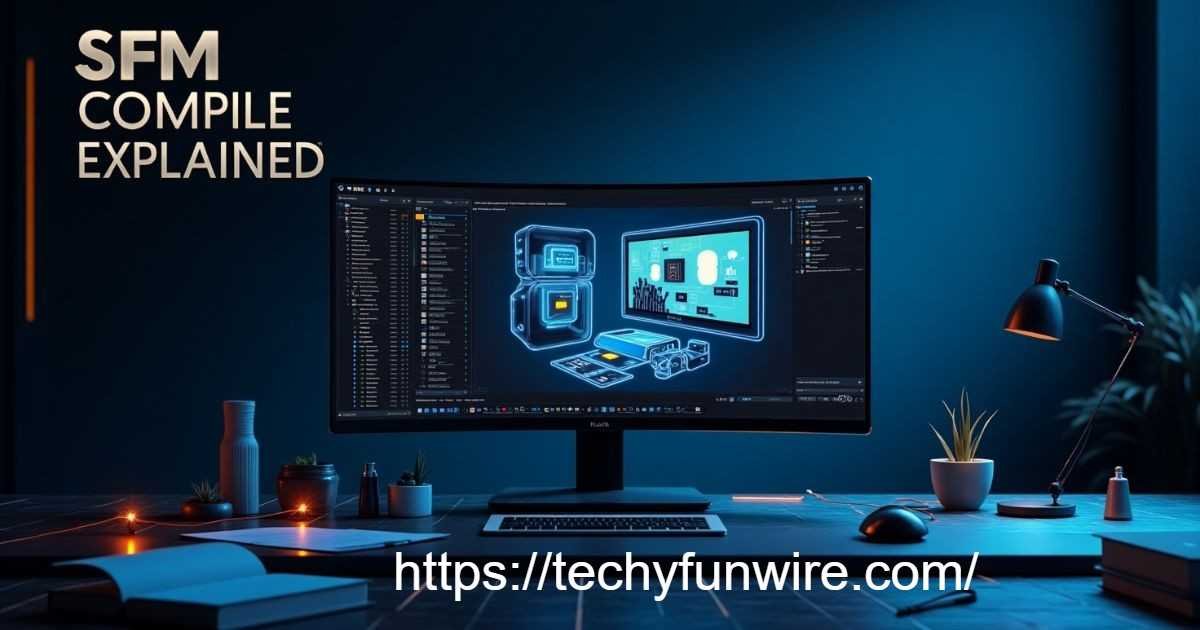Do you want to build to compile your Source Filmmaker (SFM) project but are having issues with errors or slow rendering? Compiling in SFM is an essential step to transform your animations into a quality video of the highest quality. If you’re having problems with lighting, rendering or even performance, this article will guide you through the most efficient methods for compiling your project in SFM efficiently.
What is SFM Compile?
SFM Compile is the rendering and exporting of Source Filmmaker (SFM) animations into video format. It involves creating frames and applying effects and lighting before recording the output. This process makes sure that your animation appears elegant and cinematic.
How to Compile in SFM Step-by-Step
Take these measures to effectively compile in SFM and be sure to avoid common rendering issues:
1. Setting Up Your Scene for Compilation
Before you begin compiling, be sure that your scene settings are set correctly:
- Find your FPS: You can go to the File, select Setting up your project, and then set your preferred FPS (24 or 60 FPS) to ensure more fluid animation).
- Enhance lighting: Utilize volumetric lighting efficiently and alter the shadow settings to minimize flickering.
- Reducing Particles Load: If there are too many particles in the code, your computer could be unable to function properly. Reduce the particle count when needed.
2. Choosing the Right Rendering Mode
SFM offers three primary rendering options to be combined:
- Image Sequence: (Recommended) The program exports the frames as image files (TGA PNG, TGA), allowing for greater image quality and post-processing.
- MP4 format: (Quick preview) It can be exported directly to video, but it may be affected by compression or loss of clarity.
- AVI Format (Raw): Large file size but retains more details than MP4.
3. Adjusting SFM Render Settings for High Quality
To make sure your animation appears professional, adjust these settings.
- Go to Render Settings ( Ctrl + Shift + R)
- Set Anti-Aliasing at 64x (Higher values lessen jagged edges)
- Enable Motion Blur
- Utilize Depth of Field to create cinematic effects.
- Improve the quality of shadows to avoid pixelated shadows.
- Set the Render Depth High to improve lighting calculations.
4. Compiling and Exporting Your Video
Now is the time to create your animation
- Click on File – Export – Movie.
- Select the Image Sequence (TGA PNG is preferred) or MP4 for quick previews.
- Set the Resolution (1080p or 4K ) for the best resolution).
- Select the Export button and wait for the render process to be completed.
Common Problem: SFM crashes when compiling.
Solutions: Eliminate particle effects. Use image sequence rather than MP4, and shut down any background programs that are not needed.
5. Post-Processing for Best Results
After you have completed your compilation, improve your video by using:
- Adobe Premiere Pro (for editing and adding effects)
- DaVinci Resolve (for color Grading)
- HandBrake (for compressing large video files)
Troubleshooting SFM Compilation Issues
- SFM Compile Freezing at a Certain Frame?
Reduce the render settings when closing background applications or lower the texture resolution.
- Is the exported video too dark or too bright?
Make adjustments to lighting and tone mapping before exporting.
- Render Takes Too Long?
Use GPU rendering to optimize settings for shadows and simplify the scene.
Final Thoughts
SFM Compile plays an essential role in turning your video into professional footage. By optimizing your video, using the highest rendering settings and troubleshooting the most common problems, you can create the highest quality animation with no lengthy wait times or crashes.
SFM Compile FAQ (Quick Answers)
- What is SFM Compile?
SFM Compile renders and exports an animated video in Source Filmmaker into a video format.
- What is the best format for compiling in SFM?
Image Sequence (TGA/PNG) is used to get high-quality and quick previews. MP4 is also available for fast previews.
- What causes SFM to stop working while compiling?
Many particles have render settings that are too high or have insufficient RAM. Reduce effects and make use of Image Sequence.
- How do I accelerate SFM rendering?
Reduce shadow quality, less particles, and shut background applications.
- What is the best resolution for SFM exports?
1080p or 4K to get high quality.
- How do you correct dark or bright exports?
Make adjustments to the Tone Map and Light Settings before exporting.
- What is the reason my video compilation is slow?
Insufficient FPS settings or an excessive blurring of motion. Increase FPS or adjust the render settings.
- The best software for post-processing SFM renders?
Adobe Premiere Pro, DaVinci Resolve or HandBrake to compress.
Read also: Explore the Future of Technology with TechInsiderz.com Gadgets
Summary
SFM Compile is the process of rendering and exporting animations from Source Filmmaker (SFM) into a final video format. The best practice is to use Image Sequence for high-quality output, optimize render settings to avoid crashes, and perform post-processing with software like Adobe Premiere Pro or DaVinci Resolve. By following the right techniques, you can ensure smooth rendering, high-quality visuals, and a professional final output.
This guide is for educational purposes only and is based on personal experience and best practices for SFM compilation. Results may vary depending on hardware specifications, SFM version, and project complexity. We are not affiliated with Valve Corporation or Source Filmmaker. Always back up your project files before making major changes. Use SFM responsibly and follow copyright guidelines when creating and sharing content.
